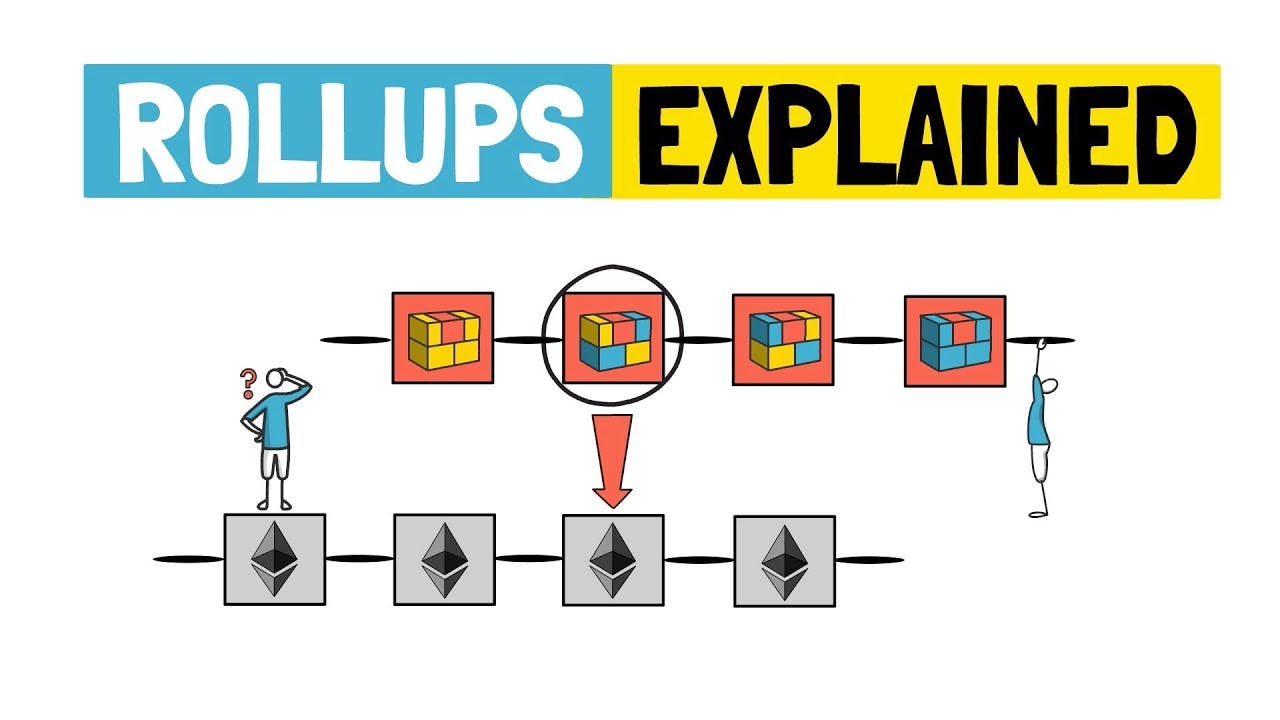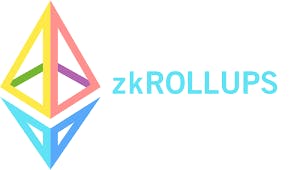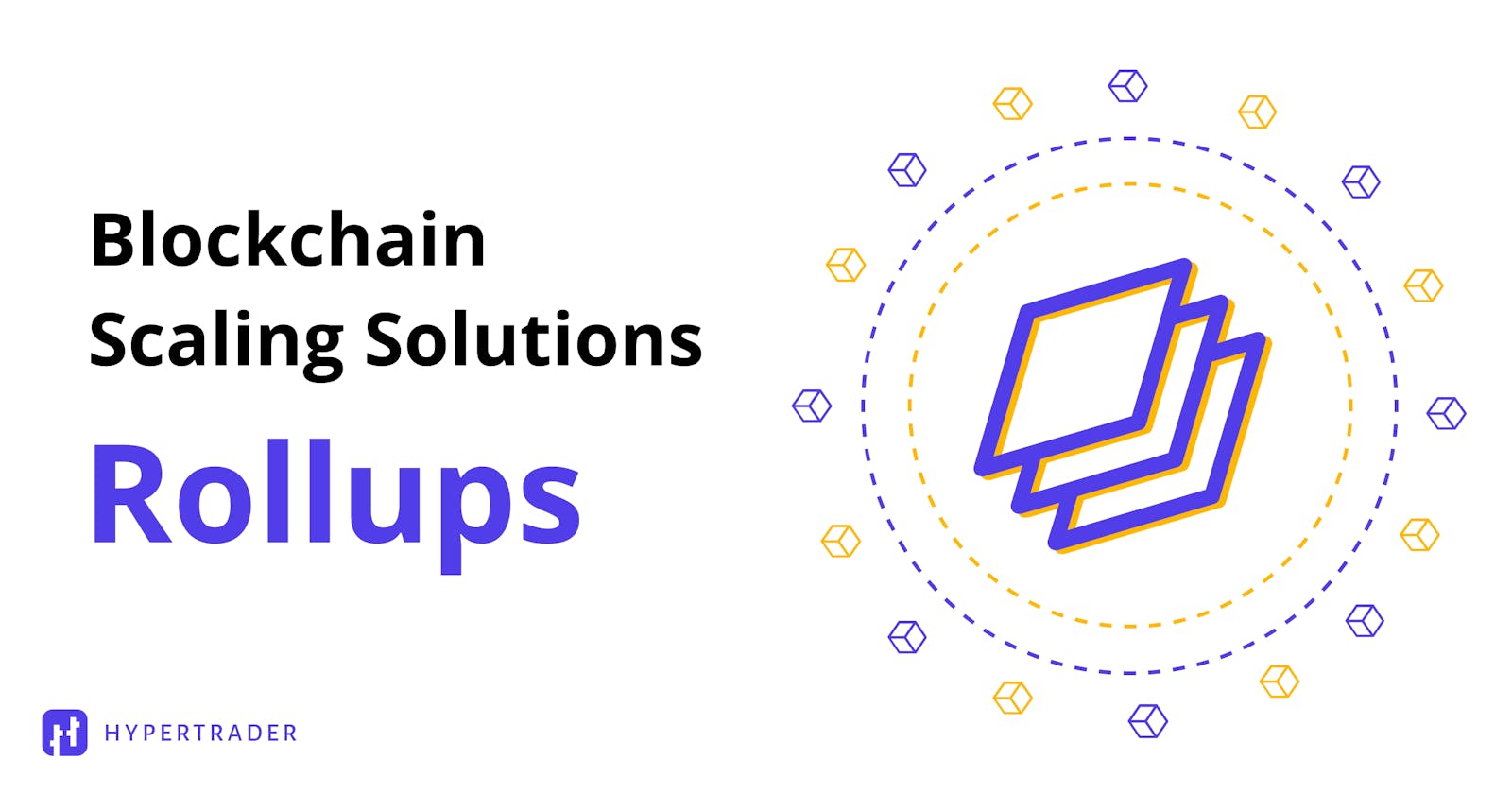Rollups: Empowering Scalability and Efficiency
Unleashing the Potential of Layer 2 Solutions.
The rapid growth of cryptocurrencies and decentralized applications (dApps) has showcased the immense potential of blockchain technology. However, as the popularity of these networks continues to surge, scalability and efficiency have emerged as critical challenges. Enter rollups – an innovative Layer 2 scaling solution that promises to address these limitations. In this article, we will delve into the world of rollups, exploring their functionality, benefits, and real-world applications. By understanding the role of rollups in enhancing scalability and efficiency within the crypto space, we can unlock new possibilities for the future of blockchain technology.
Rise of Layer 2 solutions

As blockchain technology gains traction and attracts a larger user base, the need for scalable and efficient networks becomes increasingly evident. Layer 1 blockchains, such as Ethereum, have revolutionized the concept of decentralized applications, enabling smart contracts and tokenization. However, as transaction volumes surge and network congestion become more prevalent, the limitations of Layer 1 solutions become apparent. This has led to the rise of Layer 2 solutions, which aim to enhance blockchain scalability and overcome the bottlenecks faced by Layer 1 networks.
Layer 2 solutions operate on top of existing blockchains, providing off-chain processing capabilities while leveraging the security and decentralization of the underlying Layer 1 infrastructure. Rollups, in particular, have emerged as a promising class of Layer 2 solutions, offering a compelling approach to improving scalability, reducing transaction costs, and enhancing the overall user experience. The rise of Layer 2 solutions marks an important milestone in the evolution of blockchain technology, paving the way for the widespread adoption and utilization of decentralized applications.
Layer 1 blockchains operate with a consensus mechanism that requires all nodes to validate and process each transaction. While this ensures a high level of security and decentralization, it also imposes inherent scalability constraints. Ethereum, for instance, has a limited transaction throughput, with the network capable of processing only a handful of transactions per second. As demand for blockchain applications increases, this limitation poses a significant challenge, resulting in high transaction fees and slower confirmation times.
To address these scalability challenges, the blockchain community has turned to Layer 2 solutions. Layer 2 solutions are designed to operate alongside existing Layer 1 blockchains, providing a framework for off-chain processing of transactions. By moving a significant portion of transaction activity off the main blockchain, Layer 2 solutions can alleviate congestion, reduce fees, and increase transaction throughput.
The beauty of rollups lies in their ability to leverage the security and decentralization of the Layer 1 blockchain while achieving greater efficiency and scalability. They do this by storing transaction data and computation off-chain, only submitting a summary or proof of the aggregated transactions to the Layer 1 blockchain. This off-chain processing reduces the computational burden on Layer 1, resulting in faster transaction confirmations and lower fees.
Functionality of a Rollup

To fully comprehend the significance of rollups in the realm of Layer 2 solutions, it is essential to delve into their inner workings and explore their potential benefits. Rollups, as mentioned earlier, are a type of Layer 2 scaling solution that offers a compelling approach to enhance blockchain scalability and efficiency.
A rollup is essentially a mechanism that aggregates and bundles multiple transactions into a single transaction, which is then submitted to the underlying Layer 1 blockchain for validation. This allows for a significant reduction in the number of transactions that need to be processed on the main blockchain, thus increasing scalability.
To ensure the integrity and security of off-chain transactions, rollups employ various techniques. One commonly used approach is the utilization of Merkle trees, a cryptographic data structure that allows for efficient verification of the entire transaction history. By storing the Merkle root of the rollup block on the Layer 1 blockchain, anyone can verify the validity of the transactions within the block without needing to process each transaction individually. This approach greatly reduces the computational overhead and storage requirements on the Layer 1 blockchain.
To better understand the functionality of rollups, let's consider an example in the context of decentralized finance (DeFi). Imagine a decentralized exchange (DEX) running on a Layer 1 blockchain like Ethereum. The DEX facilitates trading of various tokens, but due to the limited transaction throughput of the Layer 1 network, it struggles with high gas fees and slow transaction confirmations during peak trading periods.
To address these challenges, the DEX decides to implement a rollup solution. The rollup operates as follows:
Off-chain Aggregation: When users initiate trades on the DEX, instead of immediately submitting their transactions to the Ethereum network, the rollup system aggregates multiple trades into a rollup block off-chain. For example, let's say 100 trades are bundled together into a single rollup block.
Merkle Tree Construction: The rollup system creates a Merkle tree, which is a hierarchical data structure, using the transaction data within the rollup block. The Merkle tree allows for efficient verification of the entire transaction history without needing to process each transaction individually.
Merkle Root Submission: The rollup system submits the Merkle root, which represents the summary of the aggregated trades, to the Ethereum network. The Merkle root serves as proof that the rollup block is valid and can be trusted.
Transaction Validation on Layer 1: Validators on the Ethereum network receive the Merkle root and can independently verify the validity of the rollup block. Instead of processing each individual trade, validators only need to verify the Merkle root against the on-chain data.
Efficient Transaction Execution: Once the rollup block is validated, the trades within the block are executed on the Layer 1 blockchain, updating the balances and ownership of the tokens involved in the trades.
Types of Rollup
Rollups come in different types, each with its own approach and trade-offs. These variations cater to diverse needs and use cases within the blockchain ecosystem. Let's explore the three different types of rollups.
Zero Knowledge Rollups

Zero-Knowledge (ZK) rollups utilize advanced cryptographic techniques to provide privacy, confidentiality, and efficient scalability. ZK rollups leverage zero-knowledge proofs, a cryptographic method that enables one party to prove knowledge of certain information without revealing the actual information itself. In the context of rollups, zero-knowledge proofs allow for the verification of the correctness of transactions without disclosing sensitive data on the public blockchain.
In ZK rollups, transaction data and computation are performed off-chain, ensuring that sensitive information remains private. The off-chain computation generates proofs that attest to the validity of the transactions without revealing the underlying details. These proofs are then submitted to the Layer 1 blockchain for verification, ensuring that the rollup block is valid and can be trusted.
Optimistic Rollups

Optimistic rollups take a more optimistic approach to transaction validation, aiming to maximize scalability and minimize costs. In an optimistic rollup, the majority of transactions are assumed to be valid, and the rollup block is processed off-chain without immediate validation on the Layer 1 blockchain.
The key advantage of optimistic rollups is their cost efficiency. By assuming that most transactions are valid, optimistic rollups significantly reduce the computational load and transaction fees associated with on-chain processing. This approach enables faster transaction finality and allows for a higher volume of transactions to be processed within the same block space.
Hybrid Rollups

In addition to Zero-Knowledge (ZK) rollups and Optimistic rollups, there is a growing interest in exploring hybrid rollup solutions. Hybrid rollups aim to combine the benefits of different rollup types, leveraging their respective strengths to create a more versatile and efficient Layer 2 scaling solution.
Hybrid rollups typically incorporate elements of both ZK rollups and Optimistic rollups, taking advantage of their unique features. By combining privacy, scalability, and cost-efficiency, hybrid rollups offer a compelling solution for a wide range of use cases.
One approach to hybrid rollups involves using ZK rollups as a privacy layer within an optimistic rollup framework. In this setup, the bulk of transactions are processed optimistically, assuming their validity and minimizing on-chain computation. However, for transactions that require privacy or confidentiality, ZK rollups are utilized to secure the sensitive data. This hybrid model enables efficient scalability and cost savings for most transactions while ensuring privacy for selected transactions.
Case Study: Rollups in real time

We will look at the application of rollup in the NFT and gaming space. This will exhibit the true capabilities of Rollups in real life. We will try to understand the
To demonstrate the application of rollups in the gaming and non-fungible token (NFT) space, let's explore a case study of a popular blockchain-based gaming platform and NFT marketplace. The platform faces challenges related to scalability, high transaction fees, and slow transaction finality, hindering the seamless experience and widespread adoption of their gaming and NFT trading services. By leveraging rollup technology, the platform can overcome these limitations and provide a more efficient and enjoyable experience for users.
The rollup implementation in the gaming and NFT marketplace follows the Optimistic rollup approach, emphasizing scalability and cost efficiency. Here's how the integration unfolds:
Off-chain Transaction Processing: When users engage in gaming activities or trade NFTs, their transactions are processed off-chain within the rollup environment. The majority of transactions are assumed to be valid, allowing for faster and more cost-effective processing without immediate on-chain verification.
Optimistic Execution: The rollup system optimistically executes the off-chain transactions, updating the relevant token balances, ownership records, and in-game assets. This optimistic approach eliminates the need for costly on-chain computations for every transaction, resulting in significant cost savings and improved transaction throughput.
Dispute Resolution Mechanism: In the event of a dispute or suspected invalid transaction, the rollup system provides a mechanism for users to raise concerns and initiate a dispute resolution process. Users can submit relevant transaction data and evidence to the Layer 1 blockchain, triggering an on-chain validation process.
On-chain Validation: Validators on the Layer 1 blockchain review the disputed transactions and associated evidence. Through a consensus mechanism, validators determine the validity of the transactions and resolve the disputes accordingly. This on-chain validation ensures the integrity of the gaming activities and NFT trades, maintaining the fairness and trustworthiness of the platform.
Transaction Finality: Once the disputes are resolved, the finalized transactions are confirmed on the Layer 1 blockchain, updating the permanent state of the gaming assets and NFT ownership. This finality assures users that their in-game progress, NFT collections, and ownership rights are securely recorded on the underlying blockchain.
Pros of Rollups

Rollups offer a range of benefits that make them an attractive solution for enhancing blockchain scalability and efficiency. These benefits not only address the limitations of Layer 1 blockchains but also open up new possibilities for decentralized applications. Let's explore some of the key advantages of rollups:
Enhanced Scalability: One of the primary benefits of rollups is their ability to significantly improve scalability. By aggregating multiple transactions into a single rollup block, rollups reduce the number of individual transactions that need to be processed on the Layer 1 blockchain. This aggregation effectively increases the transaction throughput of the underlying blockchain, allowing it to handle a higher volume of transactions. As a result, rollups enable blockchain networks to scale and accommodate growing user demands without sacrificing transaction speed or increasing congestion.
Reduced Transaction Costs: Rollups offer a substantial reduction in transaction costs compared to traditional Layer 1 transactions. By processing multiple transactions within a single rollup block, the computational burden and storage requirements on the Layer 1 blockchain are minimized. This reduction in on-chain processing translates to lower gas fees for users, making blockchain applications more affordable and accessible. Reduced transaction costs not only benefit end-users but also contribute to the overall growth and adoption of decentralized applications by removing financial barriers and encouraging broader participation.
Improved User Experience: With faster transaction confirmations and lower fees, rollups significantly enhance the user experience of interacting with blockchain applications. Users can enjoy quicker transaction settlements, enabling near-instantaneous transfers of assets and faster execution of smart contracts. Moreover, the reduced costs associated with rollups make it more economically viable for users to engage with decentralized applications, promoting user retention and attracting new participants. The improved user experience facilitated by rollups plays a crucial role in driving the mass adoption of blockchain technology.
Interoperability and Compatibility: Rollups are designed to be compatible with existing Layer 1 blockchains, allowing seamless integration with decentralized applications and infrastructure. This interoperability ensures that rollup solutions can leverage the security, decentralization, and network effects of established blockchains like Ethereum. Developers can build on the existing ecosystem of smart contracts and decentralized finance (DeFi) protocols, enhancing the composability of applications and enabling a vibrant ecosystem of interconnected services.
Privacy and Confidentiality: Certain types of rollups, such as zero-knowledge (ZK) rollups, provide enhanced privacy and confidentiality features. By leveraging advanced cryptographic techniques, ZK rollups allow users to transact securely without revealing sensitive information on the public blockchain. This privacy feature enhances user trust and expands the use cases of blockchain technology, particularly in areas where privacy is paramount, such as financial transactions, healthcare, and identity management.
Environmental Efficiency: With the reduced computational load and energy consumption on the Layer 1 blockchain, rollups contribute to improved environmental sustainability. By processing multiple transactions off-chain and submitting summarized information to the Layer 1 blockchain, rollups help minimize the carbon footprint associated with blockchain operations. This aspect aligns with the growing focus on sustainable technologies and encourages the adoption of environmentally friendly blockchain solutions.
Cons of Rollup

While rollups offer significant advantages in terms of scalability and efficiency, it's important to consider the challenges and limitations associated with this technology. Here are some key factors to keep in mind:
Data Availability: One of the primary challenges with rollups is ensuring the availability of data. Since most of the transaction processing occurs off-chain, users and validators need access to the relevant transaction data and proofs to verify the correctness of the rollup blocks. If this data becomes unavailable or is not provided promptly, it can hinder the validation process and impact the overall security and trustworthiness of the rollup solution.
Time Delay and Finality: Rollups introduce an additional layer of processing and verification, which can result in time delays for transaction finality. While rollups offer faster transaction execution and confirmation compared to Layer 1 blockchains, there may still be a delay before transactions are considered finalized on the main chain. This delay can limit the real-time nature of certain applications that require immediate confirmation, such as high-frequency trading or real-time gaming interactions.
Initial Rollup Setup: Implementing a rollup solution requires initial setup and configuration, which may involve significant computational resources and coordination efforts. Setting up the necessary infrastructure, establishing validator networks, and implementing the rollup protocol can be complex and time-consuming, particularly for smaller projects or decentralized applications with limited resources.
Security Considerations: Rollups rely on the security assumptions and properties of the underlying Layer 1 blockchain. While rollups enhance scalability and privacy, the security of the entire system ultimately depends on the security of the Layer 1 blockchain. Any vulnerabilities or attacks on the Layer 1 blockchain can potentially impact the rollup solution as well. It is crucial to ensure robust security measures at both the Layer 1 and rollup layers to safeguard user assets and maintain the integrity of transactions.
Limited Smart Contract Functionality: Currently, rollups have limitations in terms of executing complex smart contracts. While they can support simple transaction transfers and basic smart contract operations, executing more advanced and resource-intensive computations on rollups may pose challenges. This limitation can impact the functionality and scope of decentralized applications that heavily rely on complex smart contracts for their operations.
Centralization of Validator Sets: In certain rollup implementations, the validator set responsible for the validation and verification of rollup blocks may become centralized or controlled by a limited number of entities. This centralization can raise concerns about potential collusion, censorship, or compromised security. Ensuring a decentralized and diverse validator set is crucial for maintaining the integrity and decentralization of rollup solutions.
Upgradeability and Interoperability: Upgrading or modifying rollup protocols and features can be challenging due to the need for coordination among users, validators, and the Layer 1 blockchain. This can limit the ability to introduce new functionalities or adapt to changing requirements. Additionally, achieving interoperability between different rollup solutions and Layer 1 blockchains can be complex, requiring standardized protocols and coordination among various stakeholders.
It's important to note that many of these challenges and limitations are actively being addressed by researchers, developers, and the wider blockchain community. Ongoing advancements in rollup technology aim to mitigate these limitations and further enhance the scalability, security, and functionality of rollup solutions. As the ecosystem evolves, it is expected that many of these challenges will be overcome, unlocking the full potential of rollups for decentralized applications and blockchain scalability.
Future Of Rollups

Rollup technology has already proven to be a game-changer for blockchain scalability, privacy, and cost efficiency. As the adoption of rollups continues to grow and the technology evolves, several exciting developments and trends are shaping the future of this Layer 2 scaling solution:
Enhanced Functionality: Rollups are evolving to support a broader range of smart contract functionalities. Ongoing research and development efforts aim to expand the capabilities of rollups, enabling more complex computations, interoperability with different blockchains, and seamless integration with existing decentralized applications. As rollups become more versatile, they will unlock new possibilities for developers and users across various industries.
Cross-Rollup Communication: The ability for different rollups to communicate and interact with each other is gaining attention. Cross-rollup communication allows for the exchange of assets, data, and messages between different rollup solutions, enhancing interoperability and enabling a more connected and scalable ecosystem. This development will facilitate the seamless movement of assets and transactions across different rollups, further expanding the utility and reach of rollup technology.
Ecosystem Expansion: Rollups are not limited to a specific blockchain or application domain. As the technology matures, we can expect to see rollups being implemented on various blockchain platforms, such as Ethereum, Polkadot, and others. This expansion will foster interoperability between different blockchain ecosystems and enable the seamless transfer of assets and data between them. The growing adoption of rollups across multiple platforms will contribute to the overall growth and development of the decentralized finance (DeFi), gaming, NFT, and other blockchain-based sectors.
User-Friendly Interfaces: User experience (UX) improvements are crucial for the widespread adoption of rollups. Efforts are being made to develop intuitive and user-friendly interfaces that hide the complexities of rollup technology and make it accessible to a broader audience. Simplified wallets, user interfaces, and developer tools will contribute to a more seamless and user-friendly experience, attracting more users and developers to leverage the benefits of rollups.
Continued Research and Innovation: The field of rollups is an active area of research and innovation. Blockchain researchers, developers, and academic institutions are continually exploring novel approaches, consensus mechanisms, and privacy-enhancing techniques to enhance the performance and security of rollups. This ongoing innovation will drive the evolution of rollup technology, resulting in even more efficient, scalable, and robust solutions.
Mainstream Adoption: The ultimate goal for rollups is to achieve widespread adoption and become an integral part of the blockchain ecosystem. As rollup technology matures, scalability bottlenecks are addressed, and user-friendly interfaces are developed, we can expect to see increased adoption of rollups across a wide range of industries. This adoption will pave the way for the mass utilization of blockchain technology, enabling decentralized applications to scale and providing a seamless user experience for mainstream users.
Conclusion

Throughout this article, we explored the fundamental concepts of rollups, their functionality, and their applications in various industries such as finance, gaming, and NFTs. We delved into the different types of rollups, including Zero-Knowledge (ZK) rollups, Optimistic rollups, and Hybrid rollups, each with their unique characteristics and benefits.
While rollups bring numerous advantages, it's important to acknowledge the challenges they face, such as data availability, time delays, security considerations, and the need for ongoing research and development. These challenges, however, are being actively addressed by the blockchain community, and we can expect to see significant improvements and innovations in the near future.

